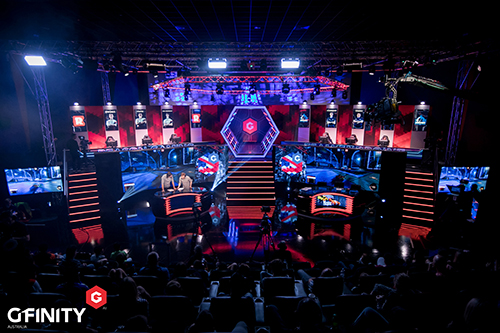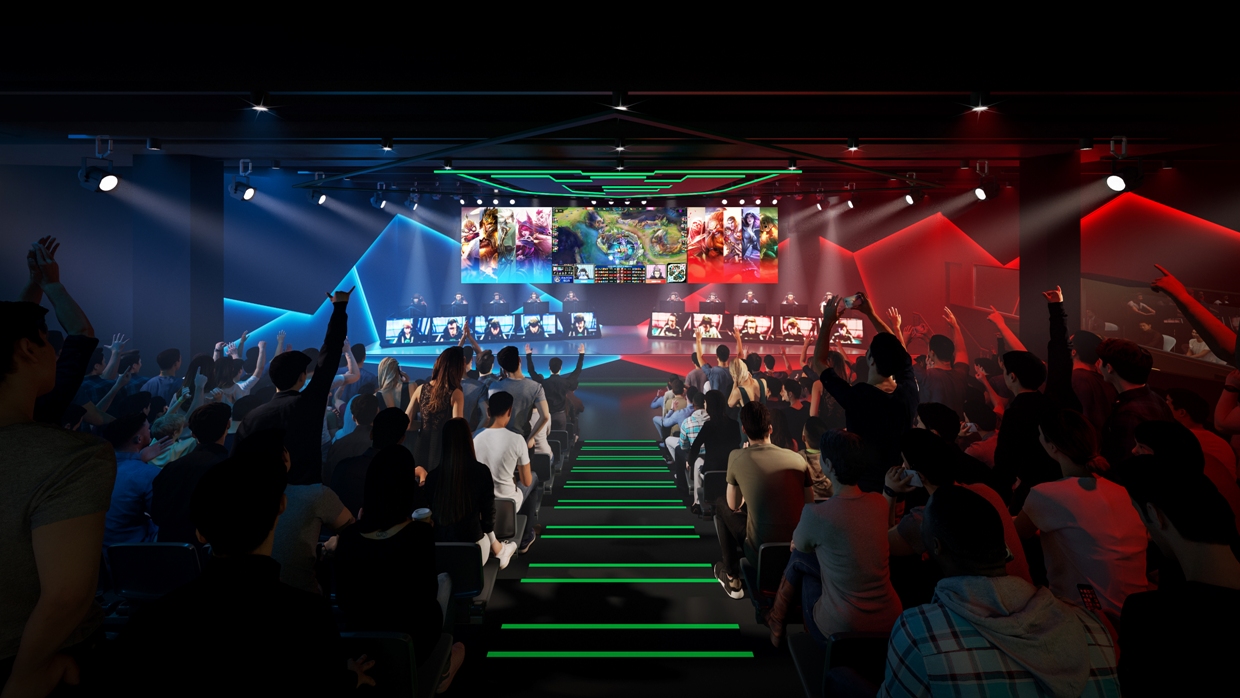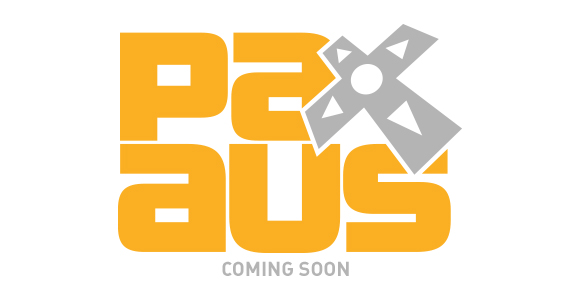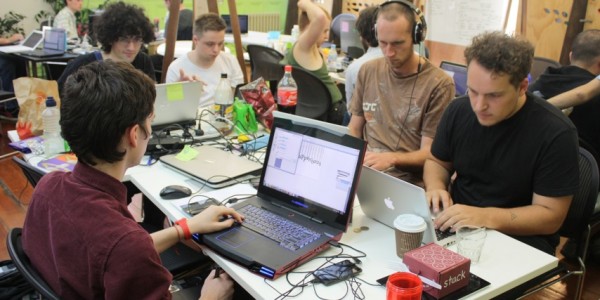
The room is smaller than I expected. And warmer, too. We’re in an old building at the Spencer Street end of Bourke Street, four floors up and without a lift. The window is open, letting in the air from an unseasonably warm Melbourne day.
It’s a little after lunch on Saturday, and I walk into a room full of people hunched over computers. By now, everyone has organised themselves into teams and chosen the idea they want to develop. Conversation is quiet; short discussions of how to implement certain aspects of their games, or what they might want a particular level to look like. Several laptop screens are showing lines of neatly-typed code, while others are showing art assets being created, usually in Photoshop. Right now, very few are showing anything like a working game.
The whiteboards scattered around the edge of the room are full of brainstorming notes, a different game idea on each. Some games do not get the privilege of being on a whiteboard. By 7pm on Sunday evening, 11 games will be completed by the roughly thirty people here.
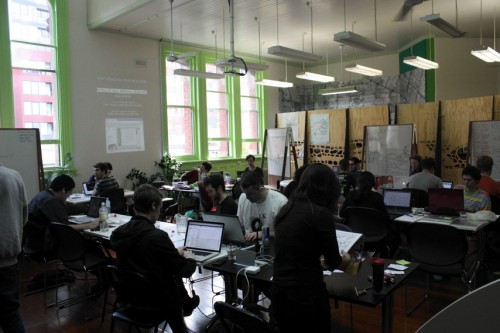
The scene soon after I arrived on Saturday
It’s a testament to the power of the internet, and especially the gaming and game development communities, that a global event such as this can happen. It began with the satirical twitter account of @petermolydeux. The account— a satire of real game designer Peter Molyneux— started out essentially parodying Molyneux’s style of promising great things that never quite seem to make it into the finished product.
Molydeux goes much further, offering ridiculous ideas such as “You are a pigeon who must go around the city trying to persuade businessmen not to jump of buildings by retrieving items from their home” and “Imagine being a spy in a game world where the entire environment is transparent and so you can’t hide”. Over the weekend, I would watch both these ideas, and nine more, come to life.
It was a developer at Double Fine Productions, Anna Kipnis, that first put forward the idea of a game jam that takes Molydeux’s ideas and turns them into real, actual games. Kipnis wondered why such a thing hadn’t happened. So did many others, and pretty soon plans were drawn up for a game jam in San Francisco. It did not take long for the idea to spread, with jams starting up in places such as Brighton, Madrid, Christchurch, Lisbon and both Melbourne and Sydney. The amazing part of all this is how quickly it occurred. Kipnis posted her tweet on March 14. Less than three weeks later, here we are, working to bring these strange ideas to life.

This is the tweet that became Fazor
I sit in a chair listening as Harry Lee, one of the organisers of the Melbourne event explains the concept of Latrop, or Portal in reverse. A game where, instead of linking two areas of a level, you have to unlink them. It won’t be until I see the concept in action the following day that I finally understand exactly what Henry had in mind.
Lee is very much a designer and thinker. Talking to him, even briefly, is like listening to a fountain of awesome game ideas. Another one he worked on ended up being called Fazor, for “face razor”, a game where you put your iPhone up against your face and used it like an electric razor. To actually make the razor work, you need to make the buzzing sound with your voice. Doing so paints black lines on the screen. It also, secretly, takes photos using the forward camera. This results in many close-ups of nostrils. Originally, the game was going to upload these photos to your Facebook, but the requirements to do so nixed the idea.

The design document for Don't Deux It
Not every game has to be a video game. On Friday evening, several physical game ideas were tested, and a few attendees were sporting bruises as a result of these attempts. By the time of the presentation on Sunday night, we had three games in this vein. Severance took the idea of making you feel emotion for a single green pixel (this idea was something of a defining concept for the entire event), and turned it into a game where you had to use a mostly-blunt knife to cut a green-dyed onion skin into smaller square portions without leaving anything that wasn’t a pixel shape. I managed to get two pixels before the timer ran out, and I left half a pixel behind. I felt sorry for that half-pixel.
There was also an untitled game, where the idea was that you played it by not actually playing it. In fact, the game existed entirely as a whiteboard where you were supposed to not leave comments, and if you did, the game’s creator would not read them.

Old Man Babby coming together
I talked to Andrew Brophy for a time about his idea, Old Man Babby. The concept is fairly simple: A side-scrolling platformer where you must guide your character through various hazards. The catch is that, whenever he passes through a waterfall, he will change into either a baby or an old man, each of which has limitations on how they can move.
Brophy is the other instigator of the Melbourne event, and well known among the local development community. It’s easy enough to just take a look at his website and see his long list of creations. Like Lee, Brophy is a thinker and fountain of ideas. Looking at the games on his website makes it clear that he’s a perfect fit for an event like this.
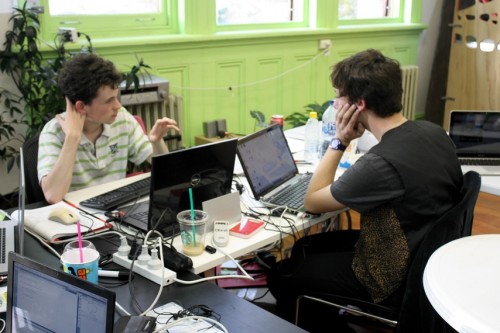
Brophy and James work hard to finish levels for Old Man Babby
By lunchtime on Sunday, games are finally starting to become recognisable, emerging from code and becoming playable demonstrations of the original ideas. What was, on Saturday, some simple objects and lots of code is forming into something recognisable as a game. Conversation gets louder and faster. I do my best, at this point, to just keep out of everyone else’s way. I know from my own experiences that the worst thing that can happen when you get into that creative zone is for someone to interrupt it, to break your flow. I sit back, take photos and write the basics of this article.
Watching all this happen makes me think of my time involved with Melbourne’s Linux community. The same sense of camaraderie and open idea sharing that permeates and defines that world exists here, too. It’s not surprising, really, as both communities are very much rooted in the same world of coding and designing.
With four hours to go, Andrew decides that it’s time to bring the music, inflicting terrible Katy Perry remixes upon us, before a howl of protest switches him over to music from NES games. As the deadline looms closer and closer, I hear snippets of conversation— “Do we have an undo button?”— as more and more focus switches to testing and playing the games rather than coding them.
At 7pm, the deadline falls. We’ve been slightly lucky in Melbourne, as the transition from daylight savings gave us an extra hour on top of the 48 we were supposed to have. No one seems to mind this irregularity. When all is said and done, there are 11 games.
- Severance (“What if you could feel for a single green pixel”)
- Old Man Babby
- Paused
- “ ” (This was not a game that you didn’t play. Or something.)
- Gap
- You Are A Spy And Everything Is Transparent
- Latrop/Fazor
- Hunger Quake
- Don’t Deux It
- Snuggly Duckling
- Taint/Chest
(Not all games were available on the What Would Molydeux website at the time of writing.)
The eleven games here are just a small part of the nearly 300 games that were made worldwide during this event. Overall, it has to be one of the most unique events I’ve had the joy of witnessing. I think that everyone involved here in Melbourne had a really great time, and the games that were created are some of the most original I’ve played.
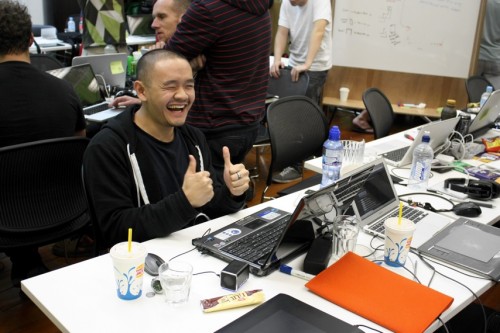
"It's good!" The usual response to You Are A Spy...
I have to give special mention to two games that I think both deserve further development.
First is Dont Deux It, which was an excellent recreation of the pigeon-saving-businessmen idea. What I loved most about this game was that it turned the whole concept into something that wouldn’t have looked out of place in a 1980s arcade, and, to my mind, that would have made it an original and brilliant arcade concept.
The other is You Are A Spy And Everything Is Transparent. This game had a really unique look, and the gameplay is quite fun as you try to plant surveillance devices within the level. A meter tracks how much surveillance you can do, while another meter tracks how much the other people in the level have noticed your activity. What makes this game brilliant, though, is that all the paranoia about losing comes not from the game, but from the player. It turns your own personal sense of paranoia into an active gameplay element. I highly recommend it.
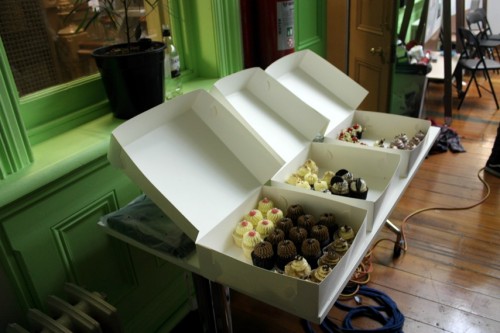
No game jam is complete without delicious cupcakes.


